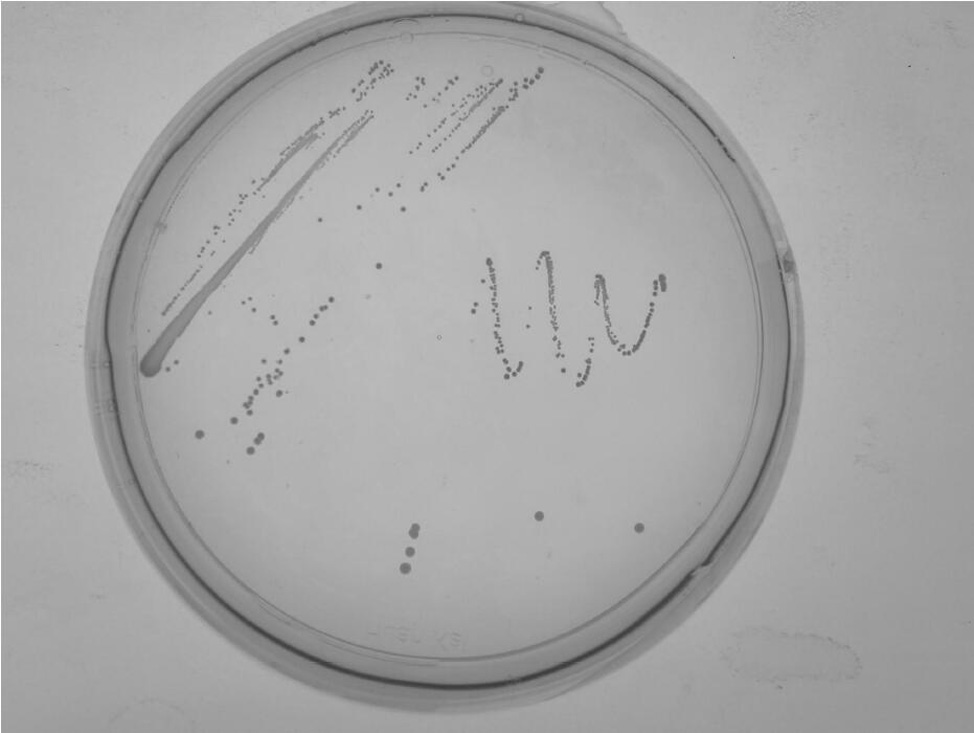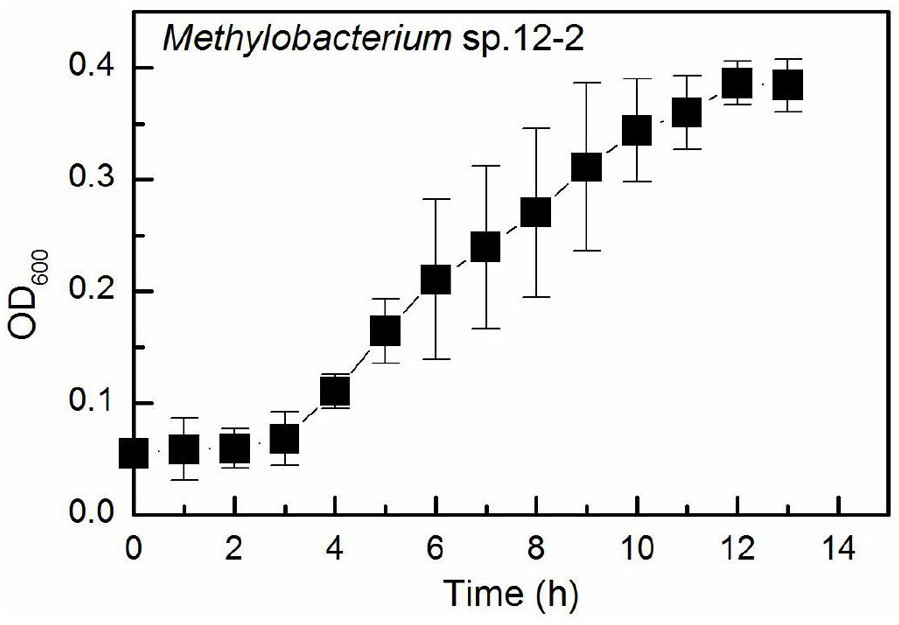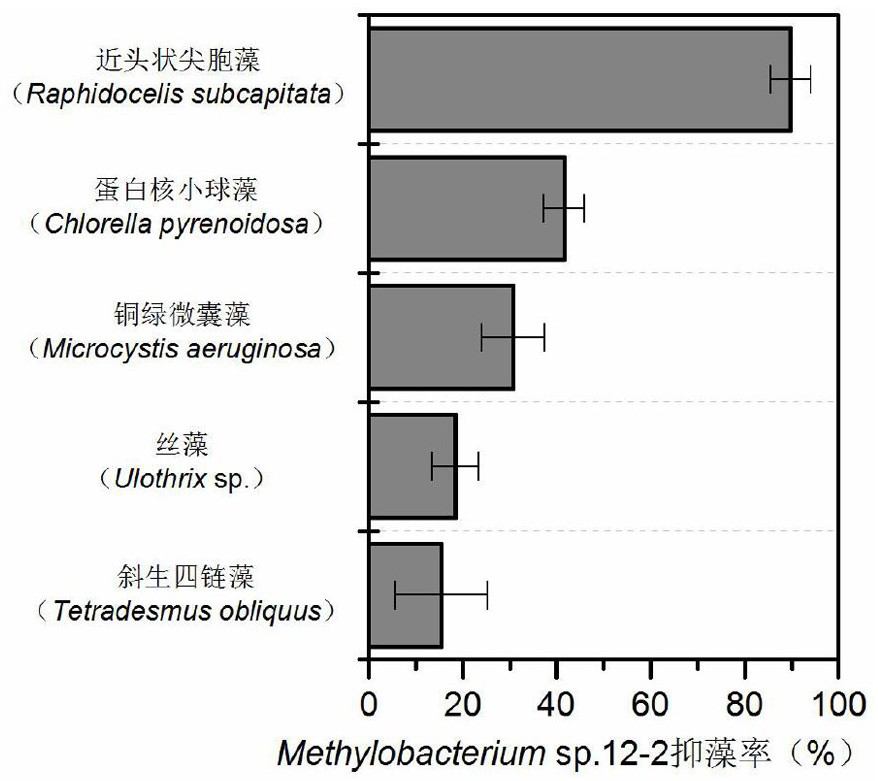Methylobacterium, fermentation product thereof and application of methylobacterium in inhibition of growth of algae
A Methylobacillus and algae technology, applied in the field of microorganisms, can solve the problems of long running time, unsuitable for large-scale operation, secondary pollution, etc.
- Summary
- Abstract
- Description
- Claims
- Application Information
AI Technical Summary
Problems solved by technology
Method used
Image
Examples
Embodiment 1
[0021] Example 1 Methylobacter ( Methylobacterium sp.) 12-2 isolation, identification and culture
[0022] Methylobacillus of the present invention ( Methylobacterium sp.) 12-2 was isolated and purified from Hongze Lake, South China Agricultural University, Tianhe District, Guangzhou City, Guangdong Province, and specifically includes the following steps:
[0023] (1) Separation: Collect water samples from Hongze Lake of South China Agricultural University and dilute them to 10 5 , 10 6 , 10 7 Then spread on algal powder inorganic salt medium (1 g / L K 2 HPO 4 , 0.5 g / L MgSO 4 , 0.5 g / L NH 4 Cl, 0.5 g / L KNO 3 , 0.1% trace elements, 0.1% vitamins, 1% high-purity spirulina powder (purchased from Wanbang Industrial Co., Ltd. in Henan), and the formula of trace elements is 10mL / L HCl, 1.5 g / L FeCl 2 ·4H 2 O, 190 mg / L CoCl 2 ·6H 2 O, 100 mg / L MnCl 2 ·4H 2 O, mg / L, 70 mg / L ZnCl 2 , 62 mg / L H 2 BO 4 , 36 mg / L Na 2 MoO 4 ·2H 2 O, 24 mg / L NiCl 2 ·6H 2 O, 17 mg / LC...
Embodiment 2
[0026] Example 2 Methylobacter ( Methylobacterium sp.) 12-2 broad-spectrum algal inhibition
[0027] Microcystis aeruginosa ( Microcystis aeruginosa ), Tetraphyllans oblique ( Tetradesmus obliquus ) and Chlorella pyrenoidosa ( Chlorella pyrenoidosa ), Cynocystis subcapitaris ( Raphidocelis subcapitata ) and silk algae ( Ulotrixsp.) were transferred to BG11 medium and cultured for 10 days, then the test strain Methylobacter 12-2 (refer to (3) culture method of Example 1, using the stable phase Methylobacter 12-2 bacterial liquid) Inoculated in BG11 medium containing Microcystis aeruginosa, Tetraphyllans obliquus, Chlorella pyrenoidosa, Cynocystis subcapitaris and Rhizoma algae (volume ratio of bacteria and algae liquid is 1:9), at 25 ℃, 12 Cultured for 4 d under the conditions of h day / 12 h night and 2500 lx, with 3 parallels in each group. According to the acetone extraction method in "Spectrophotometric Method for Determination of Chlorophyll in Water Quality", th...
PUM
 Login to View More
Login to View More Abstract
Description
Claims
Application Information
 Login to View More
Login to View More - R&D
- Intellectual Property
- Life Sciences
- Materials
- Tech Scout
- Unparalleled Data Quality
- Higher Quality Content
- 60% Fewer Hallucinations
Browse by: Latest US Patents, China's latest patents, Technical Efficacy Thesaurus, Application Domain, Technology Topic, Popular Technical Reports.
© 2025 PatSnap. All rights reserved.Legal|Privacy policy|Modern Slavery Act Transparency Statement|Sitemap|About US| Contact US: help@patsnap.com



